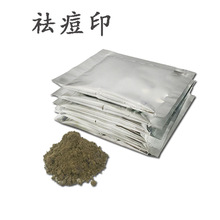An international team from the University of Adelaide, Australia, Tianjin and Nankai Universities in China and Kent State University in the US has published new research claiming that a simple, cheap acid layer over the catalyst in an electrolyzer allows it to split seawater with "nearly 100 per cent efficiency," without any pre-treatment other than filtering.
A typical electrolyzer catalyst, says the team, might be made from cobalt oxide, with chromium oxide on its surface. Seawater would generally ruin these catalysts via severe erosion due to chlorine ions, or gunk them up with insoluble precipitations of magnesium and calcium, which build up and block the electrodes.
But the addition of a Lewis acid layer on the catalyst, it seems, was able to capture enough negatively charged hydroxyl anions from the seawater to generate a powerfully alkaline environment with a pH of 14 around the catalyst, stopping both chloride attacks on the catalyst and the formation of precipitates on the electrodes.
“We have split natural seawater into oxygen and hydrogen with nearly 100 per cent efficiency, to produce green hydrogen by electrolysis, using a non-precious and cheap catalyst in a commercial electrolyzer,” said Professor Shizhang Qiao.
"The performance of a commercial electrolyzer with our catalysts running in seawater is close to the performance of platinum/iridium catalysts running in a feedstock of highly purified deionized water," added Associate Professor Yau Zheng.
Two things seem clear looking at the decades ahead: there's going to be a lot of demand for green hydrogen, and the water shortages that are projected to impact two-thirds of the world's population by 2025 are going to get worse.
But if green hydrogen can be made in bulk using seawater, then anywhere it's used, either in a fuel cell or in a combustion process, it'll end up being combined with oxygen and released back into the environment as fresh water – a desalination process with a clean energy bonus, if you will.
The team says it's working to scale up its system for commercial-scale electrolyzers, and looking for industrial partners to take it into production.
The paper is available in the journal Nature Energy.
Sources: University of Adelaide, South China Morning Post


 相关文章
相关文章

![[Feature] Korea urged to pay conscripts better](http://res.heraldm.com/content/image/2020/01/12/20200112000183_0.jpg)


 精彩导读
精彩导读




 热门资讯
热门资讯 关注我们
关注我们
